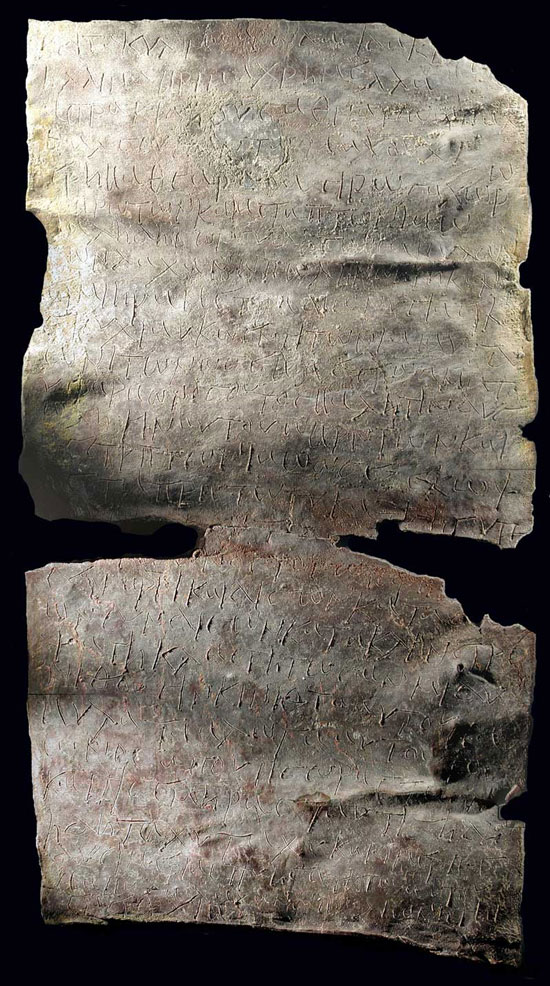Clarify the content of the curse from 1,700 years ago
Finally, after years of research, scientists deciphered the content of the curse written on both sides of a thin sheet of 1,700 years ago.
>>>The oldest European text dating back to 3,000 years
Written in Greek, the lead plate is dropped into a well in Antioch (southeastern Turkey, near today's Syrian border), which later becomes one of the empire's largest cities. Rome in the East.

The thin lead plate contains the curse content.
This curse was sent to Iao, the Greek name of God, in the hope that He could cause the vegetable seller Babylas to suffer pain and suffering.
The archaeologists discovered the lead in the 1930s but it is not until now that the content in it is clarified. Currently, it is being stored at Princeton University Art Museum.
Professor Alexander Hollmann (University of Washington), who directly translated this text, said he had known many curses against gladiators, chariots or some other characters, but never seen the 'victim' simply a normal vegetable seller.
There is no information about the proponent, so experts can only speculate their motives. Accordingly, it is likely that this is the result of fierce competition in the business. If it is true, it can be seen that the competition in the fruit and vegetable trade in the ancient world is very profound.
Using the same metaphor as in the Old Testament initially made Hollmann think that the person who wrote these words was Jewish. However, after studying other ancient magic mantras using similar expressions, he found that this might not be appropriate. Along with mentioning 'God' , this curse is not necessarily related to Jews.
- Curse in the talisman piece of 1800 years
- Curious curses in history
- Decipher the curse of the snakehead 1600 years ago
- The most mysterious ancient curse of the earth (Part 1)
- The families were caught in a grim curse in history
- Egyptian Pharaoh and deadly curse
- Mysterious curse of death clinging to the US presidents
- Detecting an ancient talisman with a magic curse in Jerusalem
- Mystical curse from the gems
- 'Curse' horrors of corpses
- Curse of Otzi - Otzi and the mysterious curse
- Legend of the curse of the
 Discovered an ancient centipede fossil 99 million years old
Discovered an ancient centipede fossil 99 million years old Discovered bat-like dinosaurs in China
Discovered bat-like dinosaurs in China Discovered a 200-year-old bronze cannon of the coast
Discovered a 200-year-old bronze cannon of the coast Discover 305 million-year-old spider fossils
Discover 305 million-year-old spider fossils